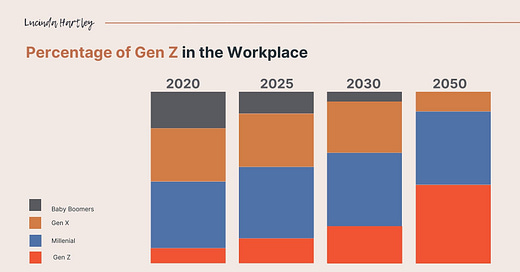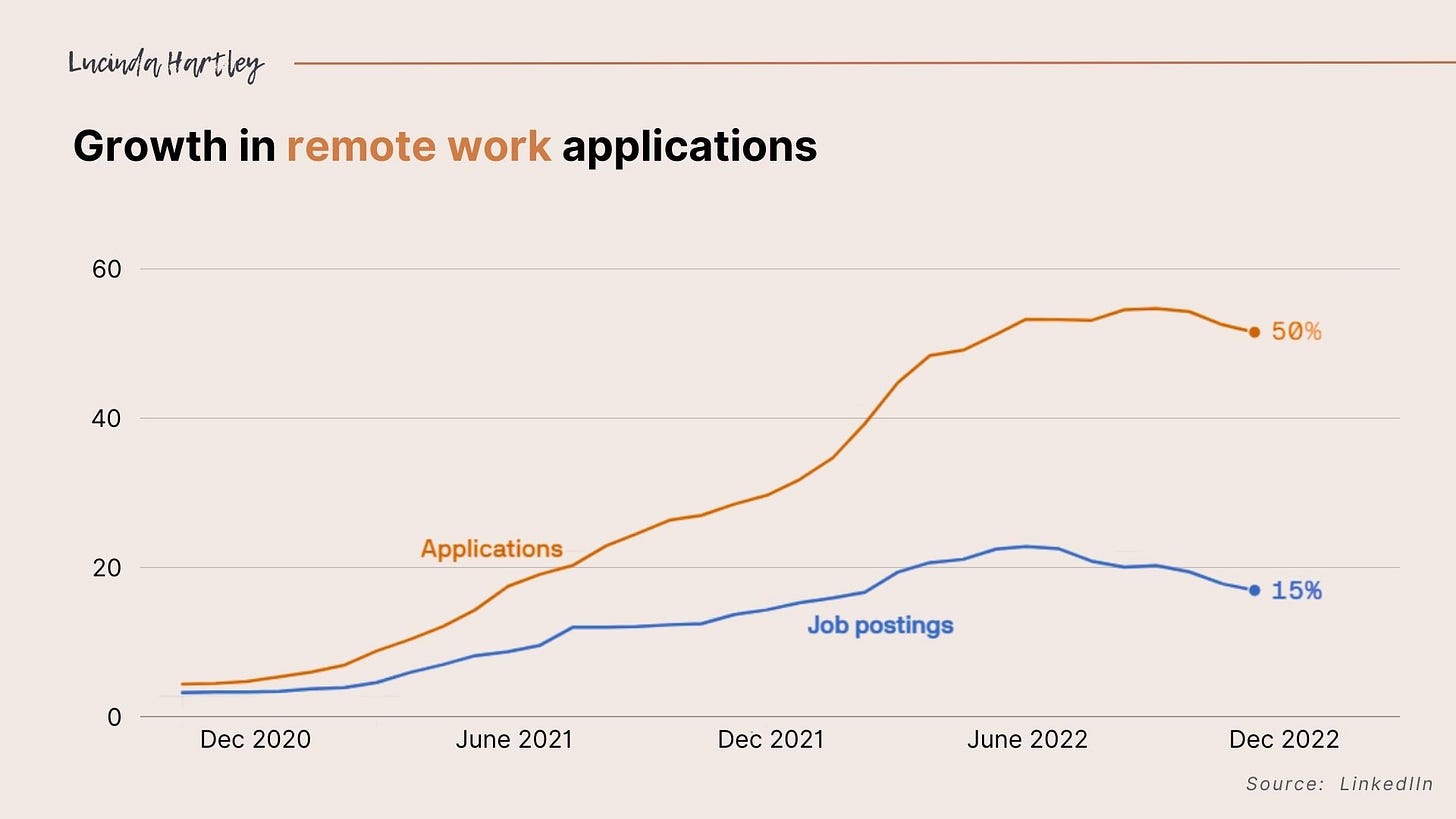Who is the future citizen? 5 charts that show what’s really happening in the future of work
It is estimated that Gen Z will have 17 jobs across 5 different careers in their lifetime. And that's before we talk about Ai. The entire definition of work is changing.
I’m Lucinda 👋, an award winning technology founder, urban futurist and keynote speaker. Welcome to Urban Happiness 🙂, where I share weekly bite-sized updates on the latest social trends and urban issues, to help leaders make informed decisions about the future.
The future of work: why we get it wrong
In almost every conversation that I’m in about the future of work, the dialogue is inevitably reduced down to a binary debate that compares the benefits of working from home vs the benefits of working from the office.
Sure, there are better opportunities for social connection face to face (if everyone is there) and there are lots of upsides to working at home, which is usually closer to school and other family needs, and avoiding commute time. And balancing the two at once - hybrid work - is difficult.
But this gross oversimplification of the future of work: desk at home vs desk in commercial office is where we get it wrong - something I talked about in this earlier post.
The real conversation about the future of work should be about how workplaces will adapt to a generational shift in work patterns, and technology changes which may reshape the entire definition of what work is.
Because, if we don’t create the right kinds of work opportunities for young people, top talent will leave. Australia cities are falling behind in global innovation rankings compared to European, US and Asian Counterparts. And, according to LinkedIn, the majority of Australian workers are open to a new job.
The latest LinkedIn data shows that 76% of Australian workers considering a new job in 2024.
Five trends for the future of work
So what are some of the trends to pay attention to? Here are five trends, and five charts that show what’s really happening in the future of work.
Read on, below…
Who is the future citizen? In this series I’m covering the TL;DR summary of trends about the future citizen so that industry professionals can make informed decisions about the future.
👉 Check out last weeks post here, or subscribe to be notified when the next posts drop.
How will they work?
How will they live?
How will they dwell?
1. Gen Z now outnumber Babyboomers in the workplace.
For the first time, Gen Z now outnumbers Baby Boomers in the workplace. According to the World Economic Forum Gen-Z will account for more than a quarter of the workforce by 2025.
This demographic shift is not just a number change; it represents a profound transformation in workplace culture, values, and expectations. Gen Z brings a digital-first approach, a strong preference for meaningful work, and a commitment to social and environmental issues.
For leaders, this is going to require a radical rethink of the office (and even what work) really means. A sustainable, flexible and technically integrated office is likely to mean a move away from central office towers to decentralised hubs, an increase in workers in regional locations (or overseas), and a huge demand for more data and broadband capacity.
2. Demand for remote work growing, but few roles available
One of the shaping forces defining the Gen-Z is that this is one of the most global, and most mobile generations, and entering the workforce at the time of the global covid-19 pandemic.
However, while there is demand for remote work, very few jobs are fully remote.
Globally, only 15% of companies are fully remote according to LinkedIn. And just 6 per cent of jobs advertised on LinkedIn in Australia could be performed on a fully remote basis in 2022.
Fully remote jobs are in high demand, revealing that tech workers who want remote roles, particularly overseas roles, may have a tough time getting them.
For leaders, there are many proven benefits of in-person work. The question needs to be how we can organise around more distributed IRL working opportunities, and how workplaces can structure for the demand for remote roles, to keep up with growing global competition.
Keep reading with a 7-day free trial
Subscribe to Urban Happiness to keep reading this post and get 7 days of free access to the full post archives.






